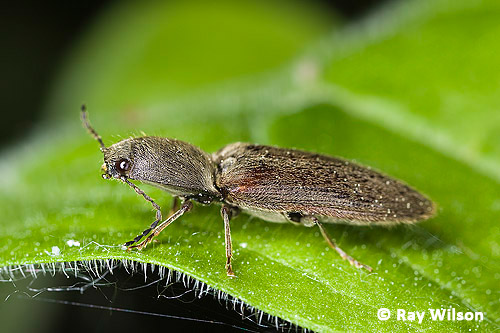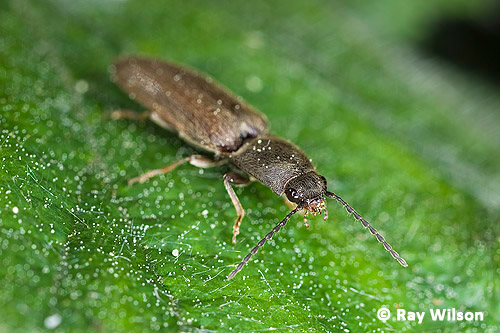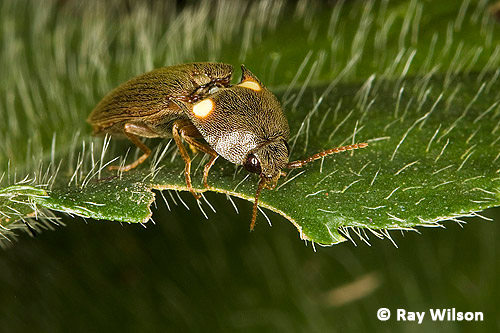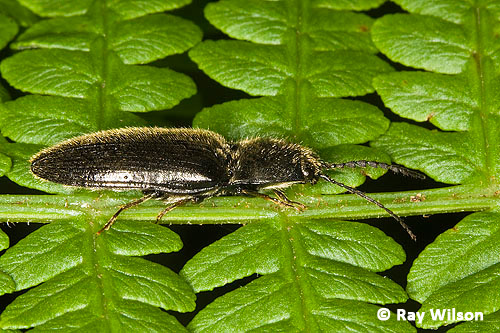

These distinctive-looking beetles are named for their ability to flick themselves into the air with an audible click in order to escape predators or to right themselves if they fall on their backs.

The mechanism of the flick response is quite elegant in its simplicity. If the beetle is threatened or finds itself on its back it quickly contracts its ventral muscles, causing a strong prosternal projection to catch against the edge of a cavity on the mesosternum that it normally rests upon. When the tension reaches a certain level the projection snaps into the cavity, propelling the beetle into the air.

It is not guaranteed to work first time, due to the rather random nature of its flight, but the beetle will always get back on its feet eventually.

The Pyrophorini click beetles are easily spotted in the pitch dark of the night due to their two bioluminescent spots at the rear of the pronotum that glow brightly green (they are rendered yellowish-orange in the photo above due to the camera's flash). Although the chemical responsible for emitting the light, luciferin, is the same as that found in the fireflies (a more famous group of bioluminescent beetles), the light is produced constantly in the Pyrophorini click beetles and doesn't flash on and off as is does in the fireflies. Pyrophorini click beetles are found only in the tropical and subtropical Americas.

Ray Wilson owns the copyright of all images on this site.
They may not be used or copied in any form without prior written permission.
raywilsonphotography@googlemail.com